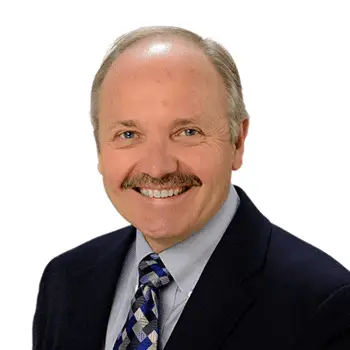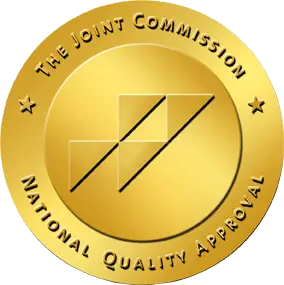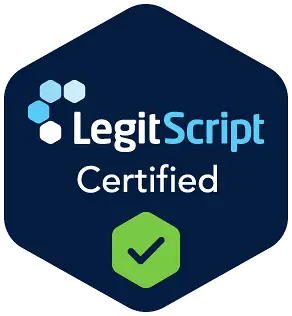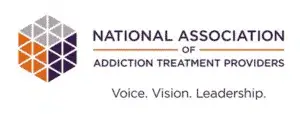Substance abuse and addiction can impact every aspect of a person’s life, from their physical and mental health to their financial stability, relationships and sense of well-being. When you or a loved one decides it’s time to seek help, one of the first questions that may arise is: How can I possibly afford treatment if I don’t have insurance? While it might feel overwhelming, there are ways to access rehab even without health insurance. Financial constraints should never stand in the way of getting the support you need.
Below, we’ll discuss your options for getting into drug and alcohol rehab without insurance, approximate costs, potential free or low-cost alternatives and different ways to pay for treatment. Recovery is possible, and the first step is learning about the resources available to help you or your loved one along the way.
Can I Go to Rehab Without Health Insurance?
The short answer is yes. While having health insurance can significantly lower the out-of-pocket cost of addiction treatment, it is not an absolute requirement for entering rehab. Many people attend substance abuse treatment without private or employer-sponsored insurance coverage. With the right planning and resources, you can find a rehab facility or community program that works with your situation.
- Many Rehab Centers Offer Financial Options: Reputable treatment facilities often recognize that not everyone has insurance, so they may provide different payment plans or sliding-scale options based on income. This approach makes treatment more accessible to people who need help right away.
- State and Federally Funded Programs: Certain rehab programs receive government funding to help provide low-cost or no-cost treatment for people who can’t otherwise afford it. These programs typically have eligibility criteria, like proof of residence in a particular state, income verification and a demonstrated need for treatment.
- Nonprofit or Faith-Based Organizations: Churches, nonprofits and charitable organizations sometimes run free or low-cost rehab programs for individuals without insurance. These programs can help bridge the gap for people who are financially unable to cover the costs of treatment.
- Community Health Centers: Community-based health care organizations sometimes integrate substance use treatment into their services. Although these programs may be more limited in scope, they can provide crucial outpatient treatment, counseling or referral services.
While insurance can simplify the process of covering treatment costs, it is by no means the only route to sobriety. If you are committed to recovery, numerous avenues exist to help you get the help you deserve, regardless of your insurance status.
This Season, Give Yourself the Gift of a Fresh Start.
Whether you are struggling with addiction, mental health or both, our expert team is here to guide you every step of the way. Don’t wait— reach out today to take the first step toward taking control of your life.
How Do I Get into Rehab With No Insurance?
The path to entering rehab without insurance can vary, but several key steps generally apply. With planning, determination and knowledge of your options, you can find a treatment approach that aligns with both your financial and medical needs. Here’s how you can get started:
- Determine What Type of Treatment You Need: Before you look for financial options, it helps to have an idea of what level of care you need. Would you benefit most from an inpatient program, intensive outpatient care or weekly therapy sessions? Understanding your needs will help you narrow down the type of facility and cost range to explore.
- Research Local and State-Funded Programs: Many states allocate funds to substance abuse treatment, making some rehab programs partially or entirely subsidized for individuals with limited income. Research online or contact your state’s health department to find out which facilities are covered. Additionally, programs like Medicaid (if you qualify) can cover substance abuse treatment.
- Speak With Treatment Centers Directly: Once you have a list of prospective rehab centers, reach out to them. Explain your financial situation and ask about payment options, scholarships, grants or sliding-scale fees. Some facilities may offer flexible financing or even short-term scholarships for those in critical need.
- Look Into Nonprofit and Faith-Based Options: Nonprofit and faith-based rehab centers often provide low-cost or free treatment services. Though these programs can fill up quickly and sometimes have waiting lists, they can be a valuable resource if you have limited finances.
- Consult With Community Health Clinics: Local community health clinics can guide you toward counseling, group therapy and other outpatient services at a reduced cost. They may also have partnerships or referrals to more comprehensive treatment programs you can attend once you stabilize.
- Seek Guidance From Social Workers or Case Managers: Substance abuse counselors, social workers or case managers in hospitals or community organizations can direct you to programs and resources designed for those without insurance. They are typically well versed in local rehab services and funding opportunities and can help you navigate the application process.
Above all, remember that every contact you make, every phone call and every piece of research you do brings you one step closer to getting the help you need. A willingness to advocate for yourself and ask for help can open doors you didn’t know were there.
How Much Does Rehab Cost With No Insurance?
The cost of rehab can vary widely, influenced by factors such as the type of program (inpatient vs. outpatient), length of stay, facility amenities and geographical location. Without insurance, these costs become the responsibility of the individual or any available external funding sources.
Inpatient or residential treatment can range from a few thousand dollars per month to tens of thousands, depending on the program’s scope.
Outpatient rehab typically costs less overall but still requires payment for individual therapy, group sessions, medication and other services.
Without insurance coverage, it’s important to explore financial options that can offset or reduce these expenses.
For example, some government-funded facilities can cost very little or be entirely free if you meet certain eligibility criteria. Meanwhile, private rehab centers may cost more but also offer more extensive treatment models and flexible payment plans.
Factors That May Influence the Cost of Rehab
- Type of Facility: Luxury rehab centers with resort-like amenities and specialized services tend to cost significantly more than standard treatment programs. However, many standard or lower-cost facilities still provide quality care.
- Location: Rehab centers located in areas with a high cost of living or desirable views and surroundings typically have higher fees. Conversely, facilities in more rural or suburban areas might cost less.
- Length of Stay: Longer treatment programs naturally cost more because you are paying for additional weeks or months of room, board and clinical services.
- Level of Care: Intensive programs, such as those for co-occurring mental health conditions, may require more specialized therapies and staff, which can increase the total cost.
- Additional Therapies and Treatments: Some rehab programs offer holistic or alternative therapies, such as equine therapy, yoga or acupuncture. While these may enhance your treatment experience, they can also add to the overall price.
Understanding these factors can help you plan your finances and make informed decisions about the type of rehab that’s right for you.
Is It Possible to Go to Rehab for Free?
Free rehab options do exist, but they often come with certain limitations or eligibility requirements. Generally, free treatment programs are offered by:
- State-funded facilities
- Nonprofit organizations
- Faith-based organizations
- Local charity initiatives
- Clinical research programs and trials (for certain forms of treatment)
While free rehab may seem ideal, these programs can have some drawbacks:
- Limited Space and Lengthy Waitlists: Because demand is high, you might encounter waitlists. For someone in need of urgent treatment, waiting can pose a serious risk.
- Fewer Treatment Modalities: Free programs may not have the extensive resources that private centers offer, so your treatment may be less comprehensive or flexible.
- Strict Eligibility Requirements: Government-funded facilities usually require proof that you’re a state resident, have a low income and/or meet specific criteria regarding the severity of your addiction.
Nevertheless, if you have no other means to cover rehab costs, free treatment programs can be a vital lifeline. If you don’t qualify for free rehab or want a program that offers more specialized therapies, consider other payment methods, like scholarships, financial aid or sliding-scale fees.
Ways of Paying for Rehab Without Insurance
If you cannot find a free program or you’re seeking a specific type of rehab that better meets your needs, there are multiple ways to help fund treatment. Remember, investing in your recovery is an investment in your future. It’s worthwhile to explore various creative financial solutions.
- Sliding-Scale Fees: Some rehab facilities base the cost of treatment on your income. This sliding scale ensures you only pay what you can realistically afford. You typically need to provide proof of income or financial hardship.
- Payment Plans and Financing: Many treatment centers provide financing options that allow you to pay off the cost of rehab in installments over time rather than in one lump sum. While you will need to budget for these monthly payments, it can make immediate access to treatment more feasible.
- Personal Loans: You may consider taking out a personal loan from a bank, credit union or online lender. Be sure to compare interest rates and loan terms, and only borrow what you can manage to repay. Some people also receive loans or financial support from friends or family.
- Crowdfunding: In recent years, online fundraising platforms have helped people gather donations for medical expenses, including rehab costs. While it can be daunting to publicly share your personal story, crowdfunding can be an effective way to mobilize support from your community.
- Scholarships and Grants: Some nonprofit organizations, professional groups or private donors may offer scholarships specifically for those needing treatment for substance use. Scholarships can cover a portion or all of the rehab costs. It’s worth exploring any scholarships your chosen rehab facility might offer.
- Employee Assistance Programs (EAPs): If you’re currently employed, your employer may have an Employee Assistance Program that offers counseling services or referrals for substance use treatment. While it may not pay for the entire cost of rehab, it can help cover some expenses or provide valuable referrals to low-cost programs.
- Credit Cards: Using a credit card to pay for rehab should be approached with caution. It can provide a short-term solution for funding, but interest rates can be high. If you choose this route, look into low-interest or zero-interest promotional offers and ensure you have a plan to pay off the balance.
- Family Support: Loved ones are often willing to help if it means seeing you healthy and sober. If family or friends offer financial support, be sure to establish clear terms and boundaries to keep tension to a minimum and avoid potential misunderstandings.
Planning for Long-Term Success
No matter how you ultimately choose to pay for your treatment, creating a plan for long-term financial stability can support your recovery. This plan might involve budgeting, seeking financial counseling or working with a case manager to manage ongoing medical expenses. Building a solid financial foundation can ease stress, reduce the chance of relapse and support a healthier, more balanced lifestyle as you move forward.
Get Help for Recovery
If you or someone you love is struggling with addiction or a co-occurring disorder, The Recovery Village at Palmer Lake is here to help. Whether you wish to attend rehab in person or online, there’s a program that can fit your needs. Contact us today to learn more about treatment plans that can work well for your situation.








